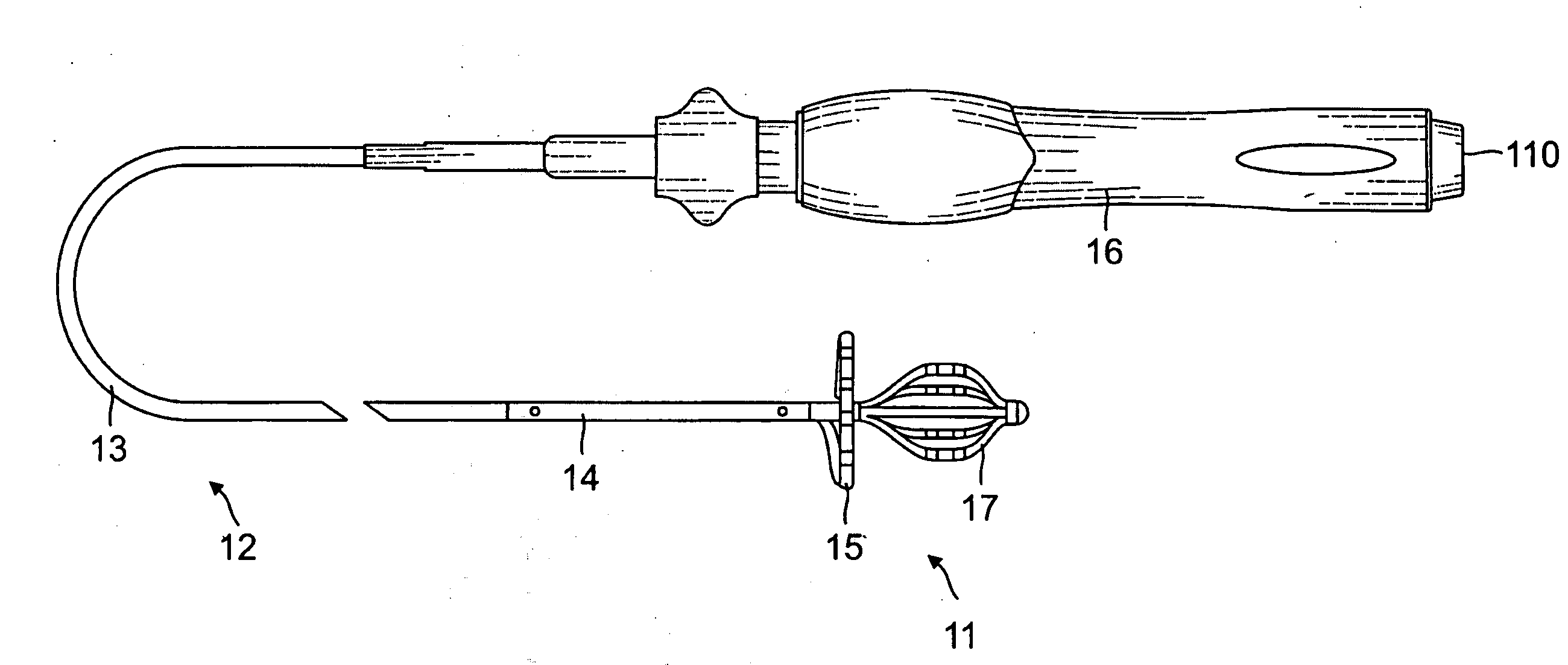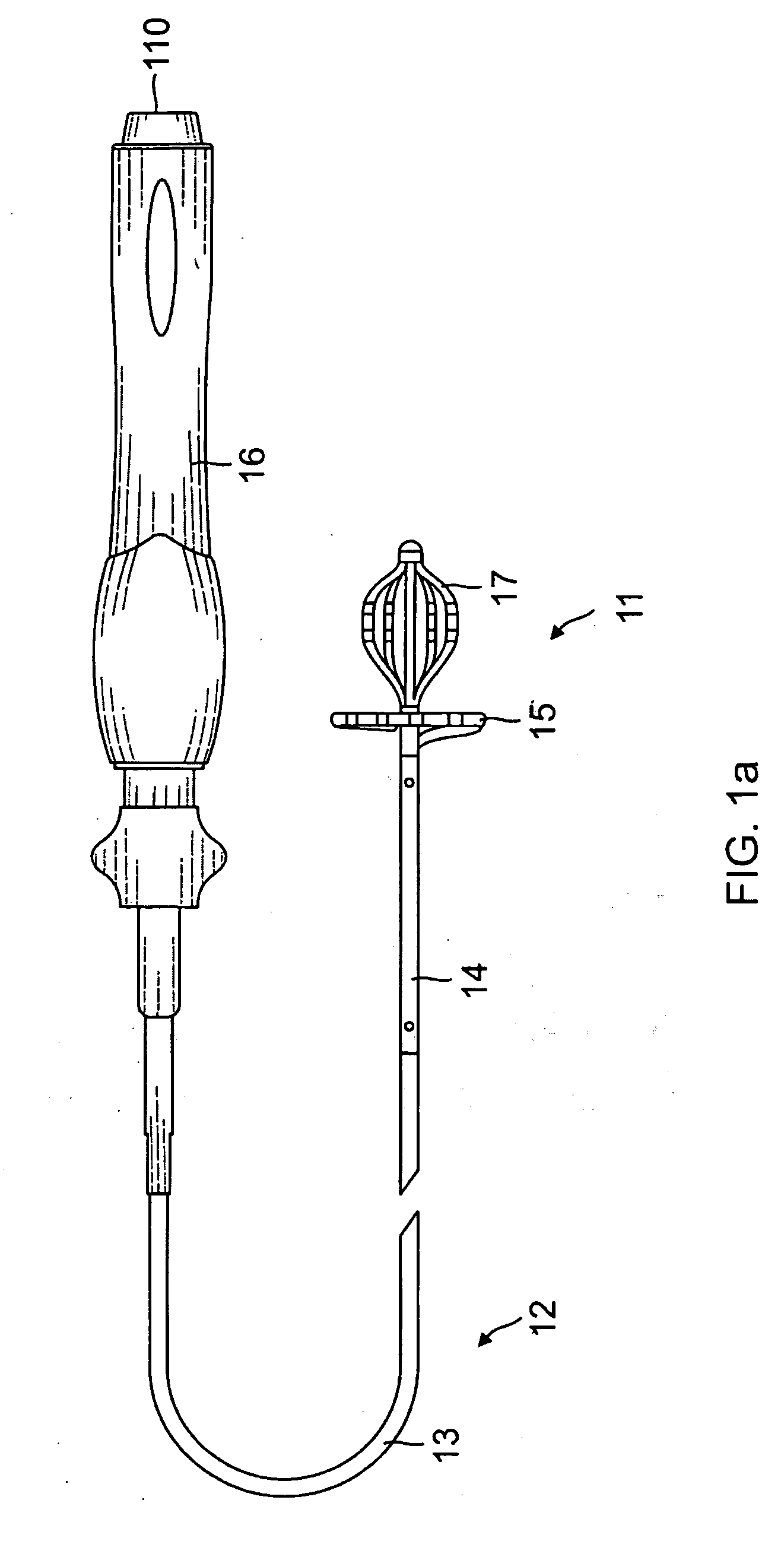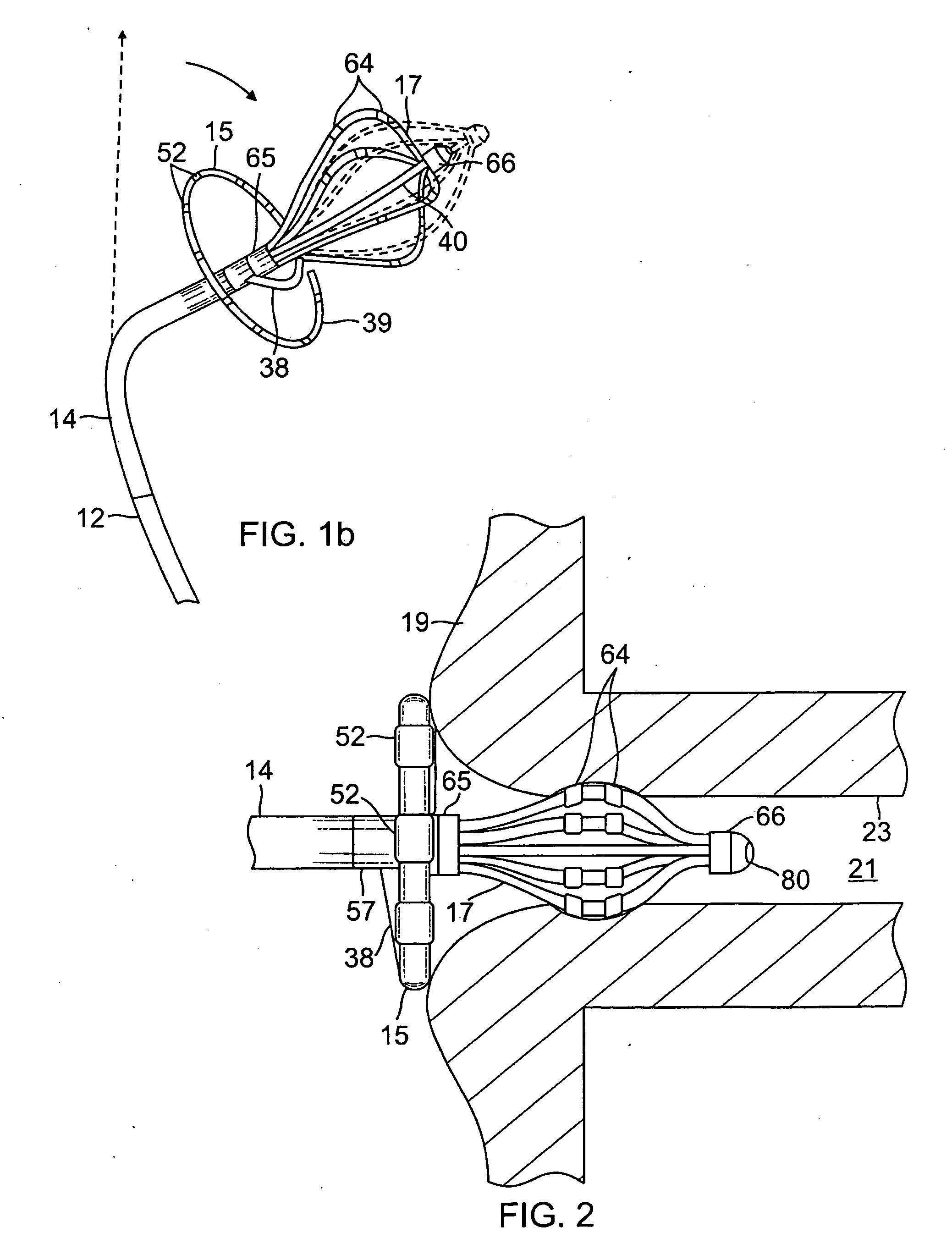Catheter with multiple electrode assemblies for use at or near tubular regions of the heart
- Summary
- Abstract
- Description
- Claims
- Application Information
AI Technical Summary
Benefits of technology
Problems solved by technology
Method used
Image
Examples
Embodiment Construction
[0036]In a disclosed embodiment of the invention, there is provided a catheter 10 having an electrode structure 11 at its distal end. As shown in FIGS. 1a and 1b, the catheter comprises an elongated catheter body 12 having proximal and distal ends, an intermediate deflectable section 14 at the distal end of the catheter body, and a control handle 16 at the proximal end of the catheter body. The electrode structure 11 extending from the intermediate section 14 has a proximal electrode assembly 15 and a distal electrode assembly 17. In the illustrated embodiment with reference to FIG. 2, the proximal electrode assembly 15 is lasso-shaped to sit on an opening 19 of a tubular region 21 of the heart, for example, an ostium of a pulmonary vein, for circumferential tissue contact at the opening. The distal electrode assembly 17 is basket-shaped to extend past the opening 19 and into the tubular region for circumferential tissue contact with an inner surface 23 of the tubular region. In tha...
PUM
 Login to View More
Login to View More Abstract
Description
Claims
Application Information
 Login to View More
Login to View More - R&D
- Intellectual Property
- Life Sciences
- Materials
- Tech Scout
- Unparalleled Data Quality
- Higher Quality Content
- 60% Fewer Hallucinations
Browse by: Latest US Patents, China's latest patents, Technical Efficacy Thesaurus, Application Domain, Technology Topic, Popular Technical Reports.
© 2025 PatSnap. All rights reserved.Legal|Privacy policy|Modern Slavery Act Transparency Statement|Sitemap|About US| Contact US: help@patsnap.com



